 |
 |
 |
| |
Antiretroviral Therapy in HIV-infected Adults Receiving
Medical Care in the United States: Medical Monitoring Project, 2009-2012
|
| |
| |
Reported by Jules Levin
IDSA 2015 Oct 7-11 San Diego, CA
Yunfeng Tie, Ph.D., ICF international
Co-authors: Emma Frazier, Ph.D, Jacek Skarbinski,M.D. CDC
IDSA/2015: US Clinicians Largely Follow Guidelines in Picking First-Line Regimens .....this is similar analysis from Janssen, this analysis however used administrative claims from "a US commercially insured & Medicare Advantage insured population. Of course this study too like the one below from the CDC is based on the old HHS ART Adult guidelines which were sweepingly changed in April 2015, see link below to new HHS Guidelines, to include in top firstling recommendations 4 integrate regimens and only 1 PI regimen darunavir/r and moved efavirenz & reyataz based regimens to alternative recommendations.
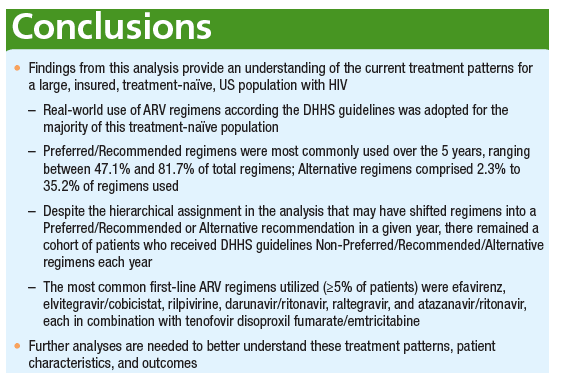
From Jules: this study was based on previous Guidelines, but the new Guidelines issued in April 2015 brought sweeping changes listing 4 integrate regimens and now only 1 PI regimen darunavir/r as the firstling recommendations moving reyataz and efavirenz based regimens to alternative recommendations - "There are now five Recommended regimens for antiretroviral therapy (ART)-naive patients-four integrase strand transfer inhibitor (INSTI)-based regimens and one ritonavir-boosted protease inhibitor (PI/r)-based regimen, as listed below (link)", -Two regimens previously classified as Recommended regimens have been moved to the Alternative regimens category, with the rationale stated below (see link)
NEW GUIDELINES
Guidelines for the Use of Antiretroviral Agents in HIV-1-Infected Adults and Adolescents - (04/08/15)
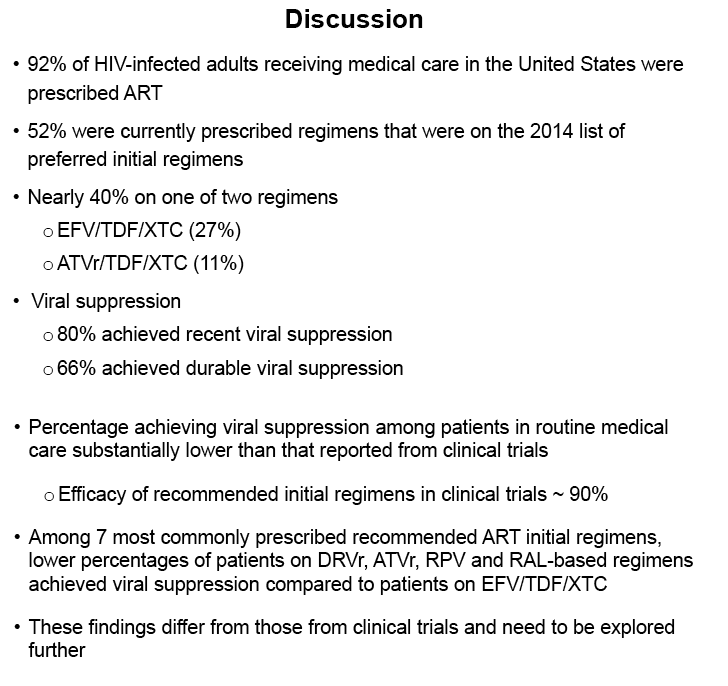
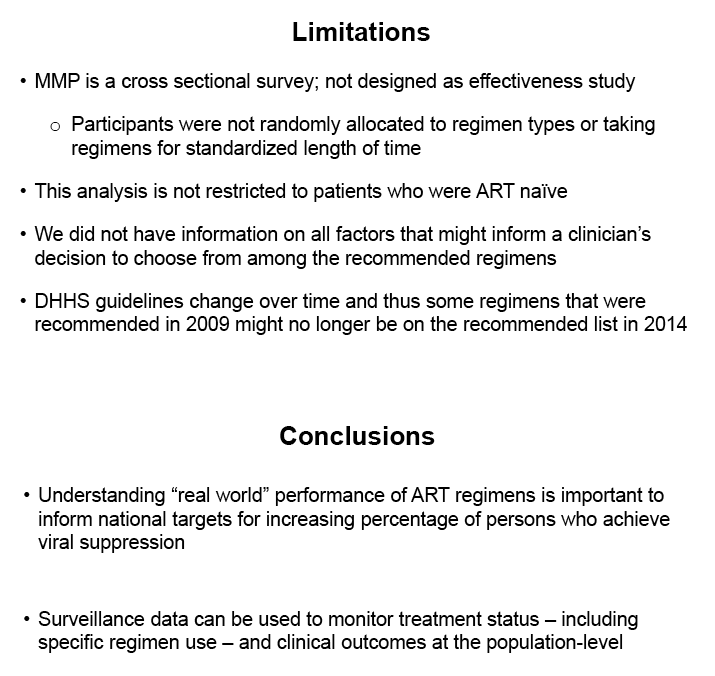
Program Abstract
Background: U.S. antiretroviral therapy (ART) guidelines issued by the Department of Health and Human Services Panel on Antiretroviral Guidelines for Adults and Adolescents specify recommended initial and not-recommended ART regimens, but nationally representative data on ART prescribing practices and on the effectiveness of guideline-specified ART regimens are sparse.
Methods: We used data from 18,095 participants in the 2009 through 2012 cycles of the Medical Monitoring Project, a nationally representative sample of HIV-infected adults receiving medical care in the United States. We classified ART regimens according to guidelines. Using multivariable logistic regression, we computed adjusted prevalence ratios (APR) and 95% confidence intervals (CI) to assess the independent associations between ART regimen categories and outcomes: durable viral suppression (all viral load tests <200 copies/ml in past year), self-reported 100% ART dose adherence in past 3 days, and self-reported ART-related side effects.
Results: Almost all (92%) HIV-infected adults receiving medical care were prescribed ART. Of those prescribed ART, 52% were prescribed recommended regimens, 6% alternative regimens, 29% not-recommended regimens, and 13% other regimens; 66% achieved durable viral suppression, 84% were dose-adherent, and 16% reported side effects. Compared to persons on recommended regimens, persons prescribed not-recommended regimens (APR 0.98, CI 0.96-0.99) and other regimens (APR 0.92, CI 0.88-0.96) were less likely to achieve durable viral suppression and be dose-adherent (APR 0.97, CI 0.95-0.98 for not-recommended regimens; APR 0.93, CI 0.91-0.95 for other regimens). Compared to those prescribed recommended regimens, persons prescribed alternative regimens (APR 1.29, CI 1.11-1.50), not-recommended regimens (APR 1.18, CI 1.07-1.31), and other regimens (APR 1.18, CI 1.05-1.33) were more likely to report side effects.
Conclusion: One-half of persons on ART were prescribed recommended ART regimens. Persons on not-recommended and other regimens were less likely to achieve viral suppression and more likely to report side effects. HIV providers should continue to be encouraged to prescribe ART according to established guidelines when clinically appropriate.
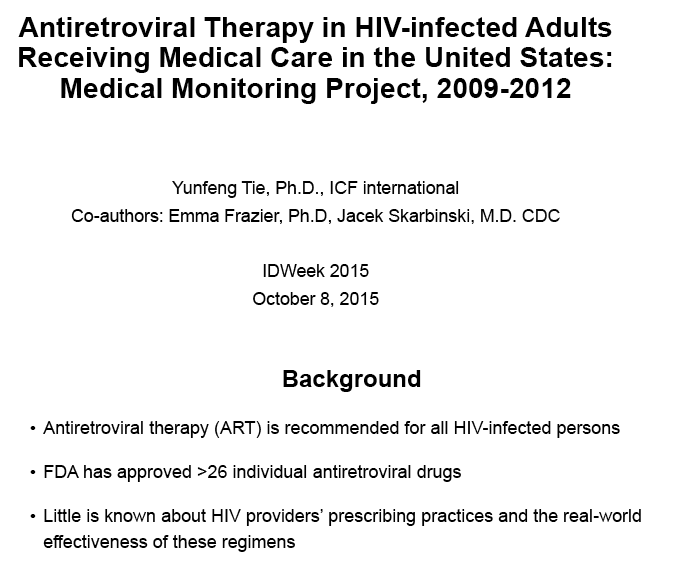
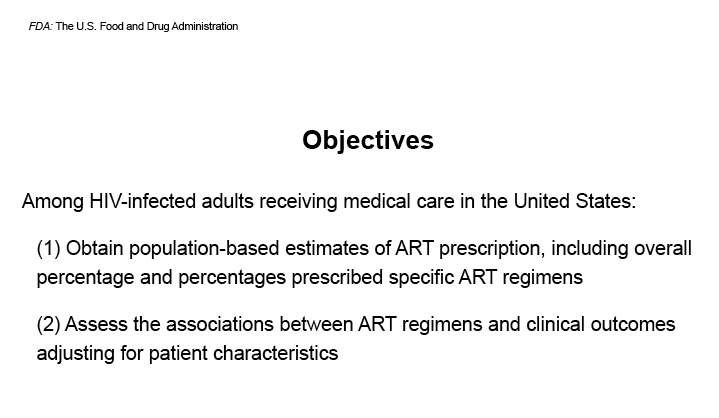
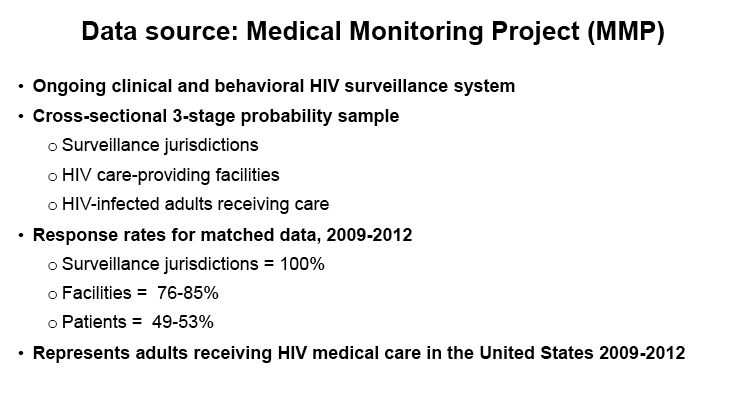
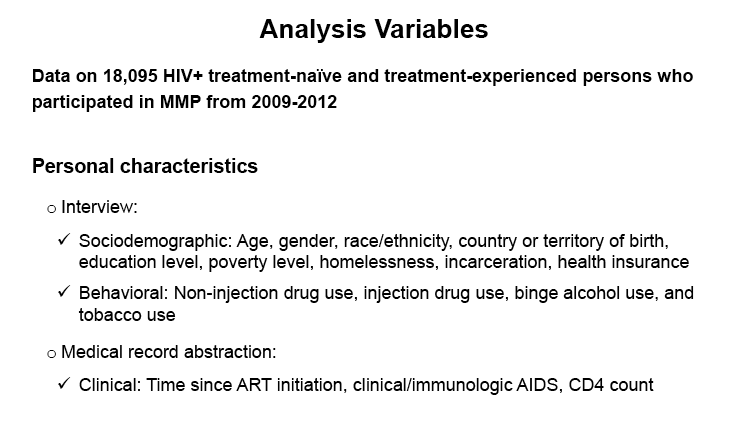
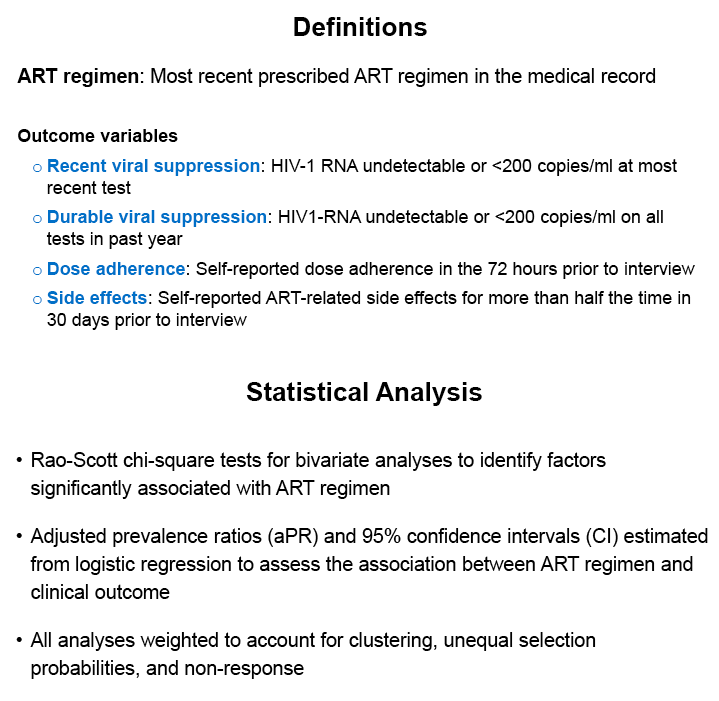
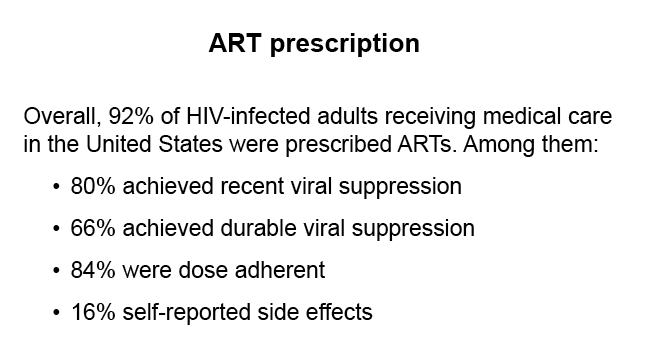
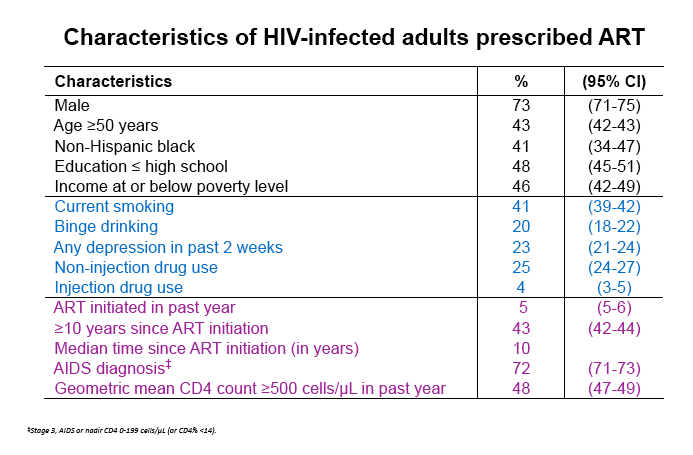
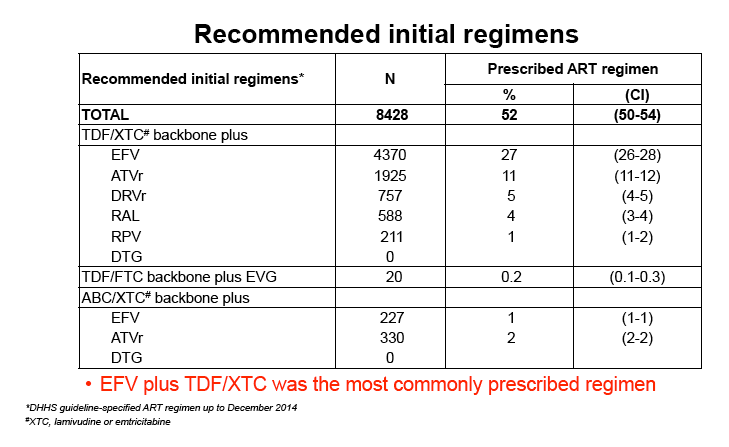
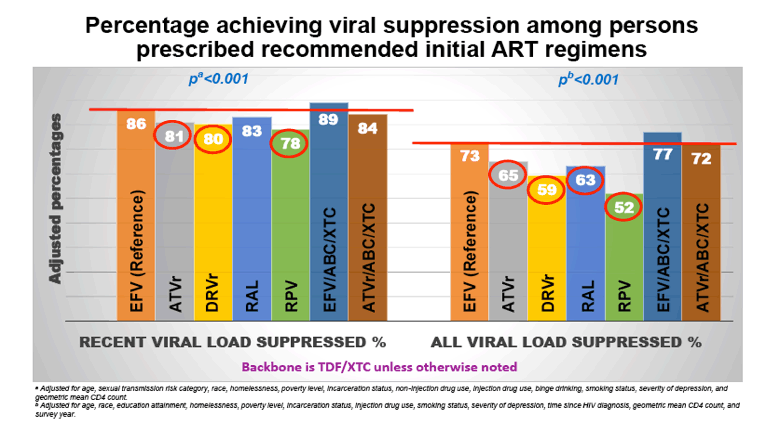
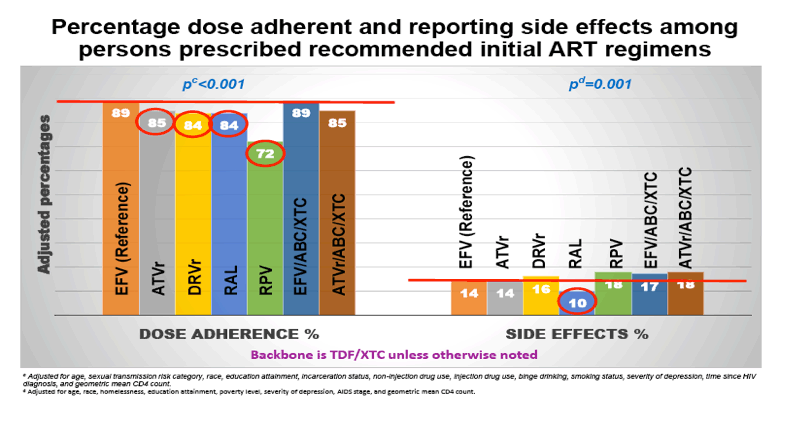
|
| |
|
 |
 |
|
|